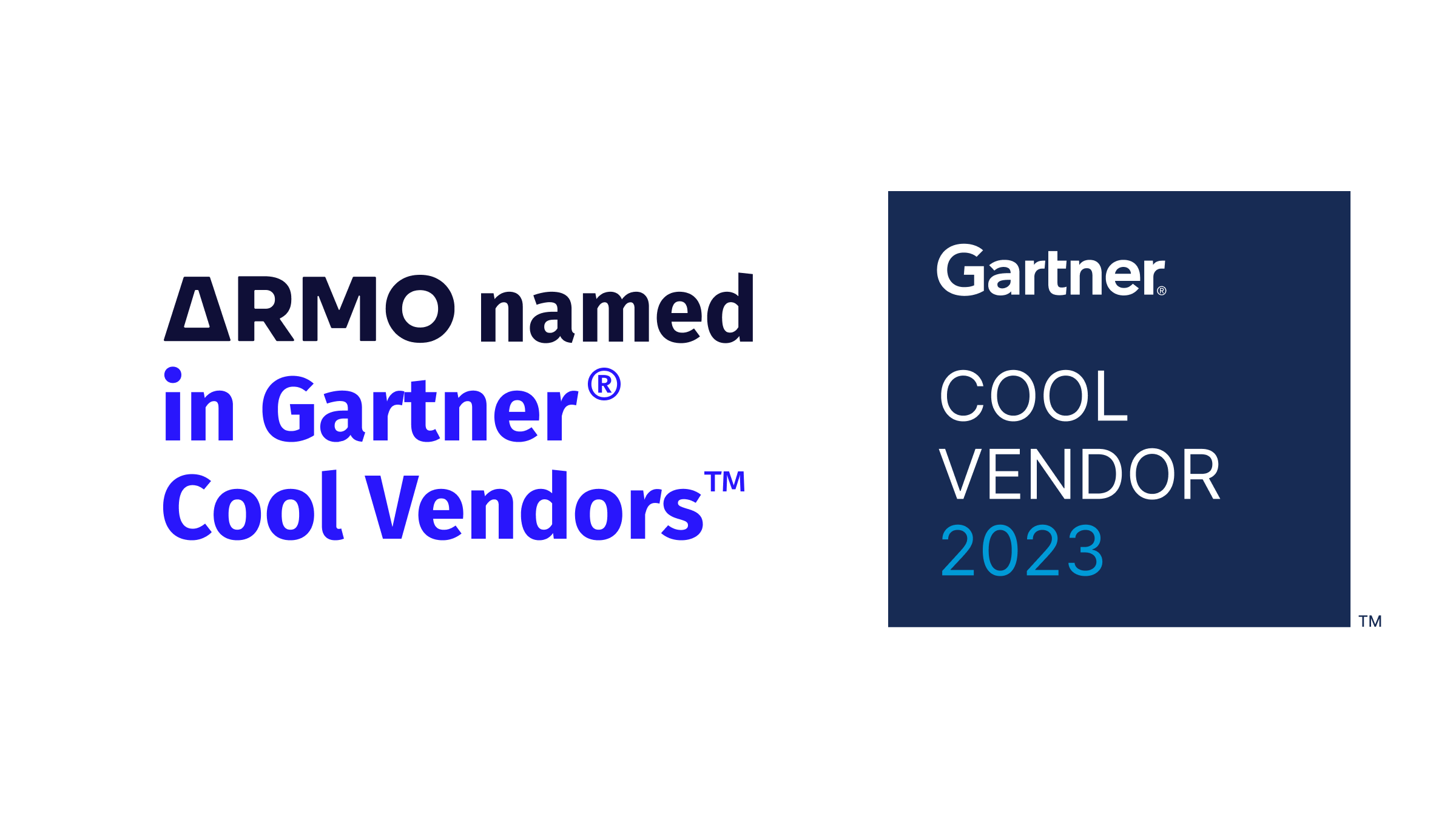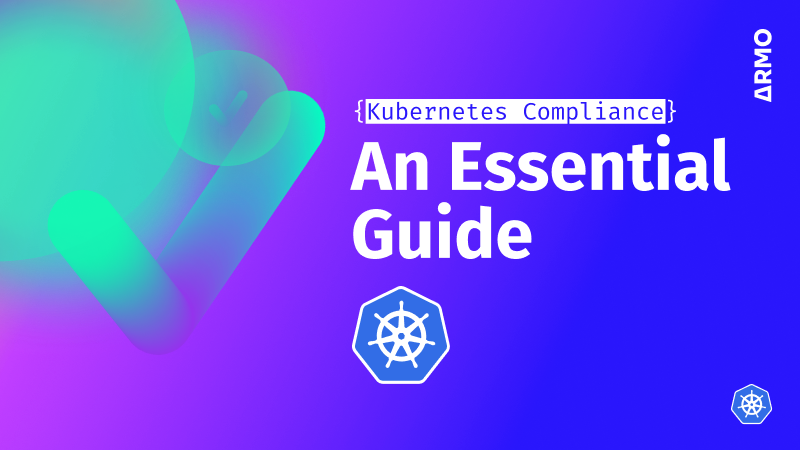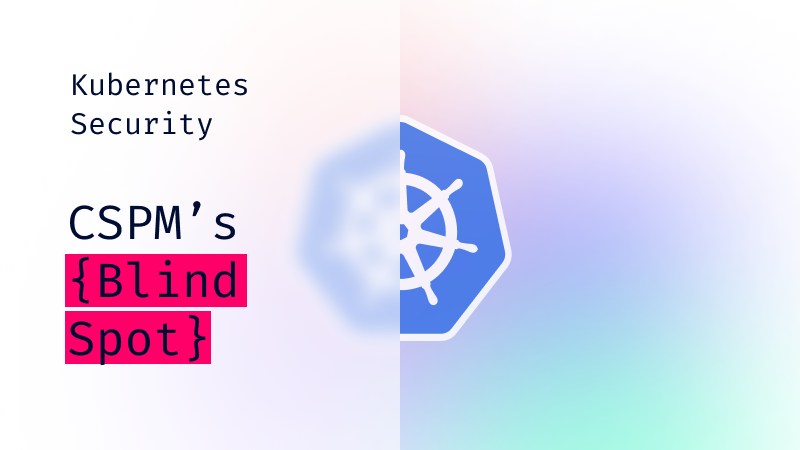ARMO named in Gartner® Cool Vendors™ report
We are excited and honored to announce that we were selected as Gartner Cool Vendor...

Dec 21, 2023
In the rapidly evolving world of container orchestration, developers have come to rely on Kubernetes to manage containerized applications. However, as Kubernetes adoption increases among organizations, ensuring the security of Kubernetes environments becomes essential. One particularly significant aspect to consider is vulnerability prioritization.
It’s essential to understand that chasing after the highest CVSS scoring vulnerabilities might not always align with real-world threats. After all, attackers often exploit less obvious, lower-scoring vulnerabilities to gain a foothold.
This post will discuss vulnerabilities in the context of Kubernetes, as well as the debate surrounding prioritizing vulnerability management. We’ll explore practical prioritization strategies tailored to Kubernetes and discuss the significance of effective vulnerability patching.

The world of vulnerabilities is extensive and complicated. Not all Common Vulnerabilities and Exposures (CVEs) are created equal. A vulnerability that poses a significant threat to one system might be inconsequential in another. This disparity becomes even more pronounced in Kubernetes, as the impact of a vulnerability can vary dramatically based on the specific context.
For instance, a vulnerability in a pod that handles sensitive data might be more critical than a similar vulnerability in a pod that deals with non-sensitive information. The architecture, the services running, the data being processed, and even the network configurations can all influence the severity of a vulnerability in a Kubernetes environment.
The common tendency to focus on all vulnerabilities that are considered high and critical according to CVSS. However, this blanket approach can be a red herring in the complex ecosystem of Kubernetes. Attackers, cognizant of standard security practices, may bypass such apparent threats. Instead, they target lower-scoring vulnerabilities, which are often underestimated yet can be equally, if not more, damaging. Walter Haydock, an established AI security architect and former professional staff member for the US House Committee on Homeland Security, has shed light on the common mistakes organizations make when it comes to vulnerability prioritization. While the blanket approach might seem cautious, it’s fraught with pitfalls, especially in Kubernetes, where vulnerabilities may or may not warrant being categorized as high or critical.
For example, a vulnerability in a test cluster might not be as pressing as a similar vulnerability in a production cluster. In the same way, a vulnerability in a deprecated service might not warrant immediate attention compared to an active one.
Simply put: A one-size-fits-all approach to vulnerability prioritization can lead to wasted resources and potential oversights.
In the ever-evolving landscape of cybersecurity, the debate around prioritizing patch and vulnerability management rages on. A recent discussion hosted by Axonius explored the merits and pitfalls of placing these crucial security measures first, especially in Kubernetes.
At its core, patch and vulnerability management are two distinct yet closely interwoven functions. While they might be managed by the same team, they often involve different processes and technologies.
This process focuses on identifying, classifying, and prioritizing any missing patches to manually or programmatically update software, operating systems, and applications. It’s worth noting that patch management isn’t solely about addressing security vulnerabilities. It can also enhance various features, such as overall performance or availability.
On the other hand, vulnerability management is dedicated to discovering, assessing, remediating, and mitigating security weaknesses in known assets. This includes vulnerabilities in operating systems, platforms, firmware, applications, software, and devices.
While “vulnerability assessment” (identifying these vulnerabilities) is often used interchangeably with “vulnerability management,” the former is merely a component of the broader vulnerability management process. Effective vulnerability management also gives organizations information about known vulnerabilities as well as the steps to take to remediate them.
Cyvatar.ai’s CEO and CXO Corey White emphasized the importance of patch and vulnerability management due to its role in identifying the “low-hanging fruit,” such as unpatched systems and open ports. In the past, identifying these vulnerabilities was a daunting task because of the lack of proper tools. However, with modern tools, the entire process can be automated, making it easier for security teams to bolster their patch and vulnerability management efforts.
Contrarily, Brian Romansky, CIO at Owl Cyber Defense, argued that software-based systems are inherently fragile and will always have vulnerabilities. Simply patching software is a never-ending cycle that only helps organizations protect themselves against known threats. Instead of making it the top priority, Romansky believes that security teams should focus on network segmentation and hardware-based security controls that attackers can’t easily compromise. Drawing from practices adopted by modern nation-states to safeguard critical defense and intelligence assets, he suggests that commercial networks can also implement similar levels of protection.
In the context of Kubernetes, these insights are particularly relevant. Given the dynamic nature of Kubernetes environments, and as each environment may have different requirements, it’s essential to weigh the pros and cons to make informed decisions about vulnerability management priorities.
A thought-provoking article on Dark Reading highlights a startling fact: Despite unpatched vulnerabilities being one of the most common causes of data breaches, patch management often finds itself at the bottom of CISOs’ priority lists. Several factors contribute to this, including long-standing friction between security and IT teams, the perception of patching as merely an administrative function, and outdated policies that hinder effective patch management.
However, in the context of Kubernetes, where the environment is dynamic and the stakes are high, it’s imperative to re-evaluate these traditional viewpoints. By understanding the entire patch management cycle, analyzing tools independently, and focusing on reducing the attack surface, organizations can prioritize patch management effectively.
Let’s take a look at some practical prioritization strategies tailored specifically to Kubernetes.
Understanding the specifics of your Kubernetes environment, such as clusters, pods, and namespaces, is crucial. Vulnerabilities affect each component within Kubernetes differently.
For instance, a vulnerability in a pod running a critical service might have more severe implications than in a less critical service. Recognizing these nuances is essential for effective vulnerability prioritization.
Beyond identifying vulnerabilities, organizations have to understand the consequences they may impose. Categorization techniques, like labeling vulnerabilities based on their potential impact on Kubernetes resources, can help. For example, it’s critical to differentiate between a vulnerability that could lead to data leakage and one that may cause only minor performance degradation.
Risk scoring systems are also indispensable tools for assessing the severity of vulnerabilities; however, they should not be the sole determinant in Kubernetes environments. It’s imperative to consider the context and the attackers’ tactics, as malicious actors may exploit seemingly minor vulnerabilities overlooked by a scoring system fixated on high-impact threats.
Maintaining an up-to-date inventory of assets within Kubernetes clusters is paramount. Knowing what’s running where and its importance to the business can significantly aid vulnerability prioritization.
For example, a vulnerability in a deprecated service might not be as urgent as one in a core business application. An accurate asset inventory ensures you know what’s at risk and prioritize accordingly.
Modern challenges require modern solutions. With the advent birth of automation and orchestration tools, identifying, assessing, and mitigating vulnerabilities can be streamlined.
For Kubernetes, this means leveraging tools that can automatically scan for vulnerabilities, evaluate their impact, and even apply patches or configurations as needed. Automation not only speeds up the process but also keeps your environment consistent and eliminates the risk of human error.
Vulnerability patching is a cornerstone of cybersecurity. No organization can avoid having to address vulnerabilities—the challenge lies in identifying and eliminating these vulnerabilities before attackers exploit them. To learn more about the important role of vulnerability patching in Kubernetes security, read our blog post ”Under the Hood of CVE Patching.”
The dynamic and intricate nature of Kubernetes environments demands a nuanced approach to security, especially regarding vulnerability management. Focusing solely on critical and high vulnerabilities is not enough, as attackers may exploit lower-severity vulnerabilities to gain access to systems.
Organizations should prioritize vulnerabilities based on risk and attack paths, implement effective mitigation strategies for unpatchable vulnerabilities, and continuously monitor their environments for new threats. By adopting a proactive and informed approach to vulnerability management, organizations can effectively protect their Kubernetes environments and safeguard their valuable data and applications.
In the world of Kubernetes security, knowledge is power, and proactive action is the key to robust defense. For those looking to further enhance their Kubernetes security, ARMO Platform offers cutting-edge solutions tailored to modern container orchestration environments. Learn more on our homepage, see a demo, or try ARMO Platform for free today.

The only runtime-driven, open-source first, cloud security platform:
Continuously minimizes cloud attack surface
Secures your registries, clusters and images
Protects your on-prem and cloud workloads

We are excited and honored to announce that we were selected as Gartner Cool Vendor...

Learn about Kubernetes compliance challenges, consequences of non-compliance, and get guidance on maintaining a secure...

This article focuses on a critical missing component of Cloud Security Posture Management (CSPM): visibility...